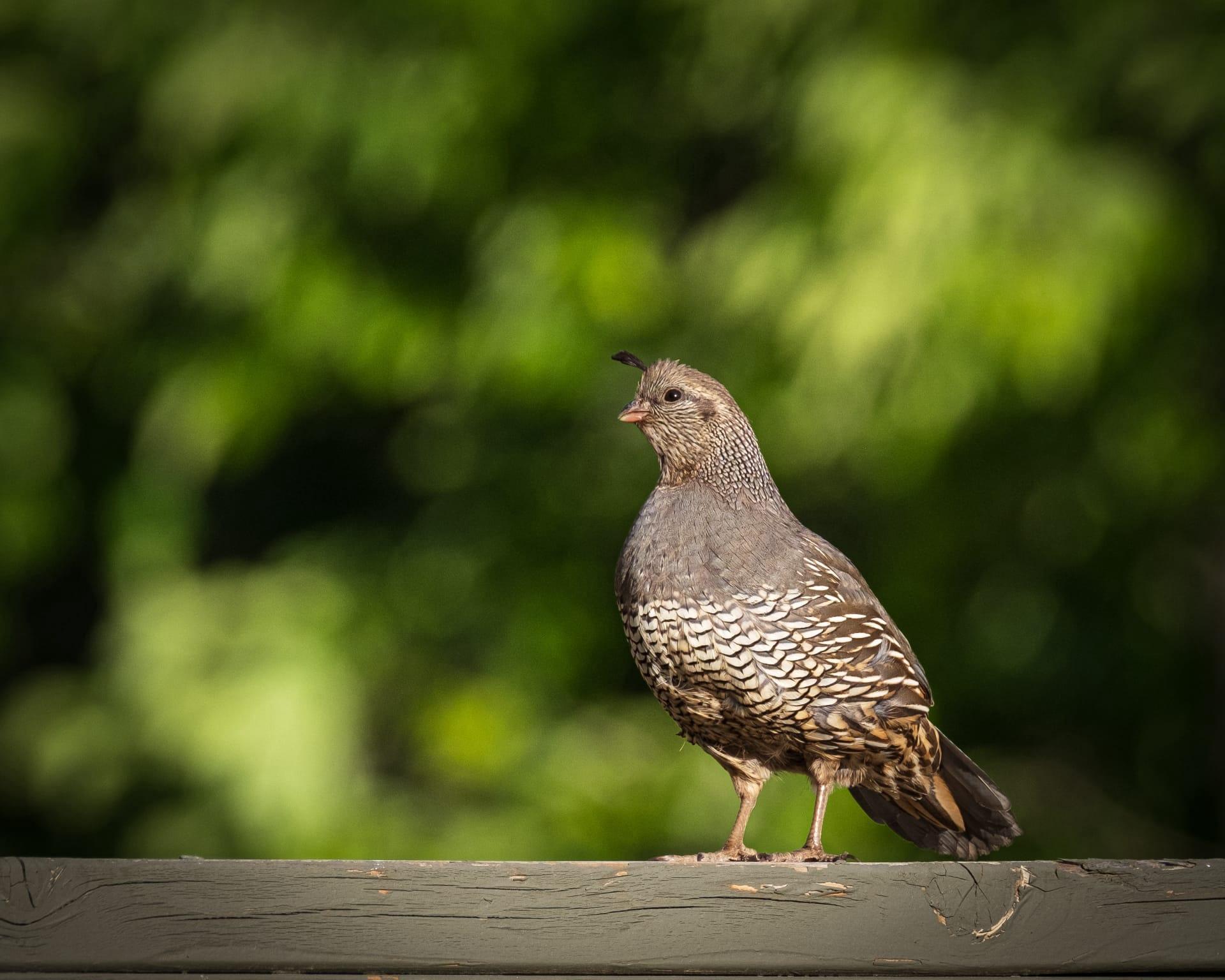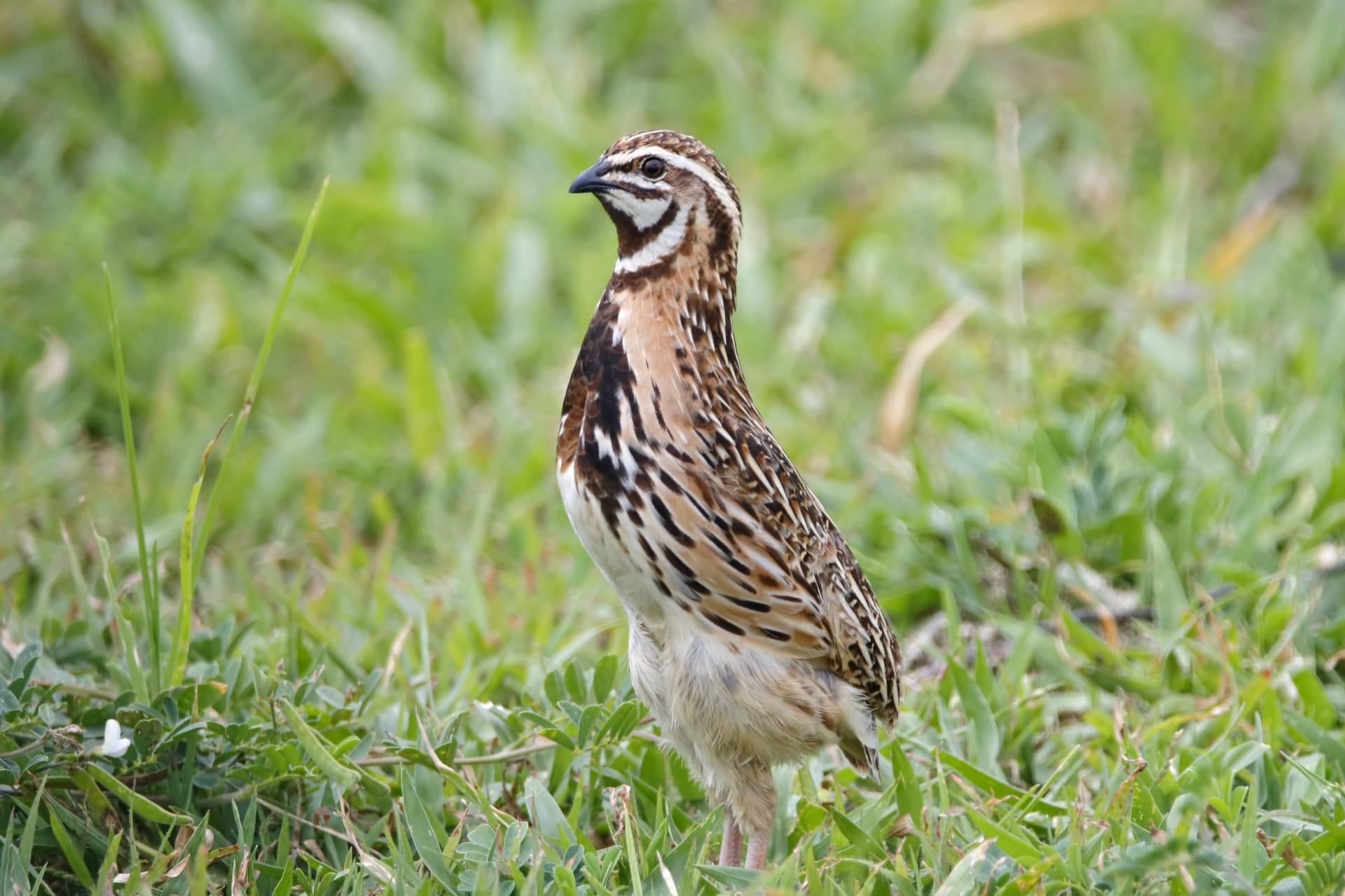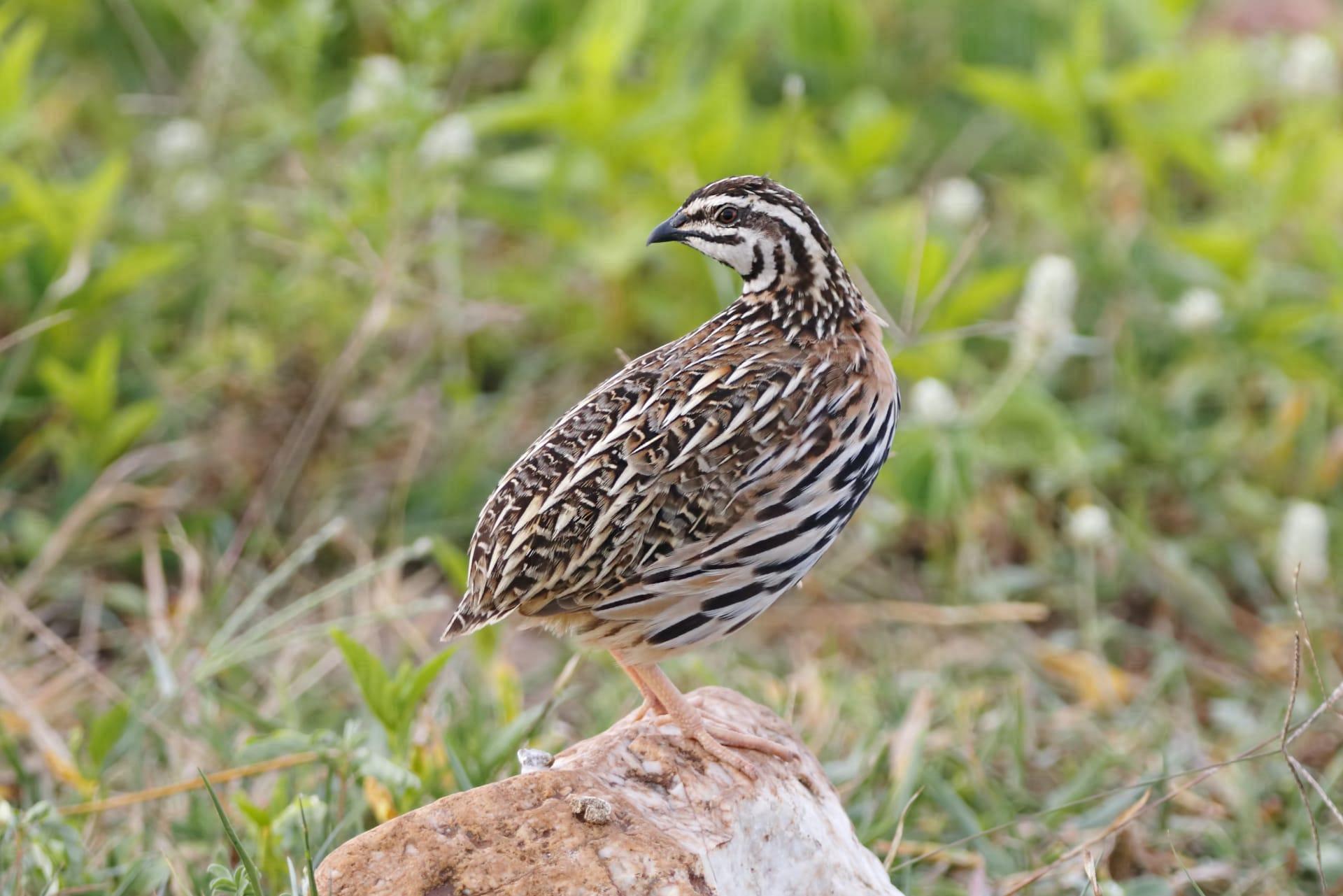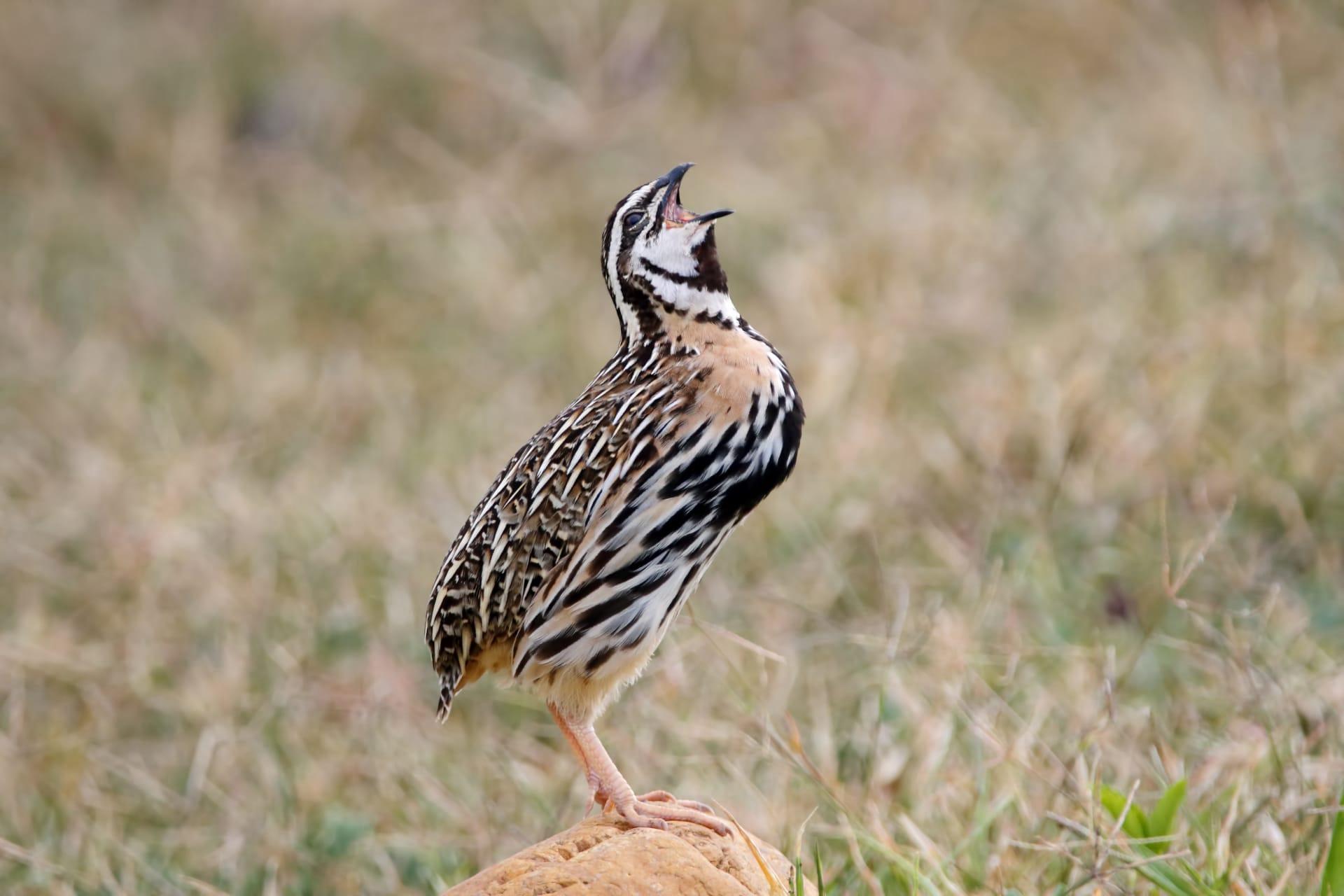1
Quails are small, plump terrestrial birds known for their distinctive "bobbing" movement, which is a series of quick, jerky motions that help them evade predators. This movement, combined with their camouflaged plumage, makes them difficult for predators to spot. These birds are small, with the common quail typically measuring about 7 inches in length and weighing around 3.5 ounces. Their size and agility aid in their survival in a variety of habitats, including woodlands, grasslands, and agricultural fields.
Another interesting aspect of quails is their diverse vocal repertoire. They are capable of producing a range of sounds, with each type of call serving a specific purpose. For instance, the common quail's "wet-my-lips" call, a series of repetitive, whistling notes, is predominantly used during the breeding season to attract mates. This call can be heard over long distances, sometimes up to a mile away. The ability to communicate effectively is crucial for quails, especially in dense vegetation where visual contact is limited.

2
Quails have a remarkable ability to lay a large number of eggs in a single clutch. The average clutch size varies among species, but some, like the Coturnix quail, can lay up to 12 eggs at a time. These eggs are notable for their beautiful and varied patterns, often speckled with shades of brown and blue, which provide camouflage against the ground. This large clutch size is an evolutionary adaptation to counter high predation rates, ensuring a greater chance of survival for at least some of the offspring.
Another fascinating fact about quails is their migratory behavior. While many species are sedentary, the common quail is a long-distance migrant, traveling vast distances between breeding and wintering grounds. These birds are known to cover thousands of kilometers during migration, moving from Europe to Africa and back. This remarkable journey is not only a testament to their endurance but also their ability to navigate across continents, often flying at night to avoid predators.

3
Quails have a unique dust-bathing behavior, which they perform regularly. This activity involves the bird squatting in loose soil, sand, or dry grass, and then using its wings and feet to kick or brush the dust onto its body. This behavior is essential for maintaining feather health, as it helps to remove parasites and excess oil. Dust-bathing is often a social activity, with groups of quails participating together, which also strengthens social bonds among the flock.
Quails also play a significant role in their ecosystem as seed dispersers. They consume a variety of seeds and grains, which pass through their digestive system relatively unharmed. As quails move around their habitat, they excrete these seeds in different locations, aiding in the spread of various plant species. This not only contributes to the health of their habitat but also ensures a diverse food source for themselves and other wildlife.

4
One of the most unique features of quails is their ability to remain still and blend into their environment as a defense mechanism. When threatened, quails can freeze in place, relying on their camouflaged plumage to render them nearly invisible against the forest floor or grasslands. This ability to remain motionless can last for an extended period, making it difficult for predators to detect them.
Quails are also known for their monogamous breeding behavior. Pairs are formed during the breeding season, and these pairs often stay together to raise their young. The male quail plays an active role in the incubation process, frequently taking turns with the female to warm the eggs. This cooperative parenting strategy increases the chances of successful hatching and survival of the chicks, as both parents contribute to protecting and nurturing their offspring.

5
Quails have a remarkable adaptation in their digestive system that allows them to thrive in various environments. They possess a specialized structure called a "crop," which is an enlargement of the esophagus where food can be stored before digestion. This adaptation allows quails to quickly forage for food and then retreat to safety, where they can digest their meal without the threat of predators. The crop's capacity to store large amounts of food is particularly beneficial during times when food is scarce.
Finally, quails are known for their impact on local ecosystems as insect controllers. They feed on a variety of insects, including beetles, caterpillars, and ants. By controlling the insect population, quails help maintain the ecological balance in their habitats. This not only benefits the vegetation by reducing leaf and crop damage from insects but also aids in controlling insect-borne diseases. Their role as natural pest controllers highlights the importance of quails in maintaining a healthy and balanced ecosystem.